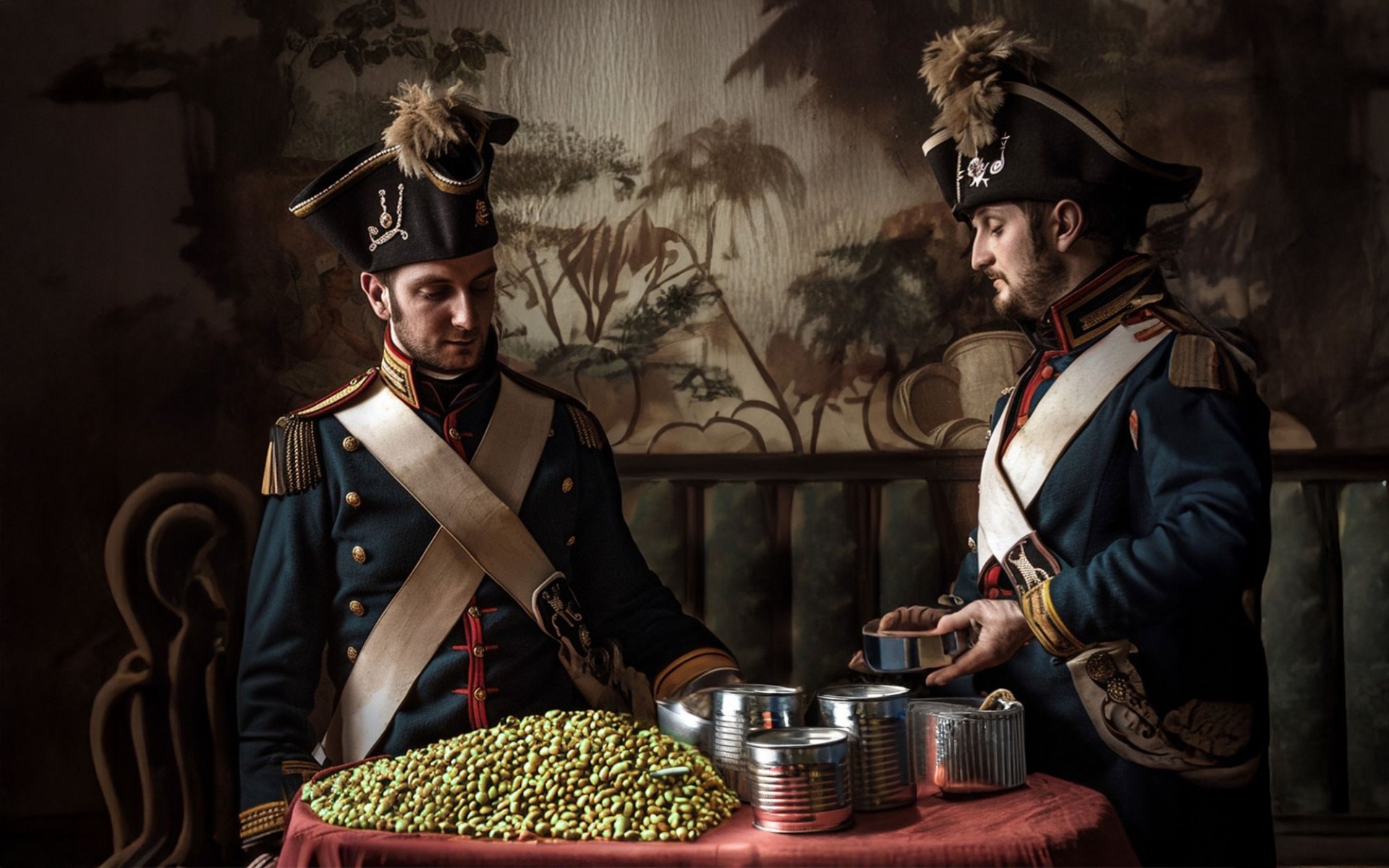Canned Pea

Humans discovered food preservation methods since prehistoric times, including pickling, smoking, and drying. However, in the 18th century, the method of food preservation by canning was developed during France's wartime. Today, Rimping Supermarket invites you to delve into the history of Canned Pea and this great innovation.
Supply Crisis in the Napoleonic Era: The Origin of Innovation
In the 18th century, during the Napoleonic Wars, France was in continuous conflict in Italy, Germany, the Caribbean, and the Netherlands. Military operations invariably brought hardships, especially in remote areas where securing supplies was a severe problem for soldiers.
In 1795 AD, the French government decided to address this problem seriously, offering a cash prize of 12,000 francs (approximately 71,933 THB) to anyone who could invent a method for preserving large quantities of food for the army.
Nicolas Appert : The Father of Canning
After the announcement, Nicolas Appert, a young chef from the Champagne region, became highly interested and determined to win. He studied various food preservation methods until he discovered that cooked food would not spoil if placed in champagne bottles and then vacuum-sealed with cork and wax.
Upon his success, Appert presented his food preservation method to the French army. His method proved effectively in preventing spoilage, and the first type of food he successfully canned in bottles was cooked peas.
In 1803 AD, Appert further refined this technique, switching from champagne bottles to wide-mouthed glass containers, which were more convenient for packaging food. This also allowed for the preservation of vegetables, meat, fish, fruits, dairy products, and more.
However, Appert continued his development. He believed that one day he would discover the best method for preserving food. In 1806 AD, he discovered the modern can as we know it today. Throughout his experiments, he continuously observed the cans for many months, checking for swelling. He concluded that this type of can showed no swelling, even when food was stored for many months, and the food remained unspoiled.
His technique gained widespread acceptance, and he eventually received the cash prize from the French government, with the condition that he must publish his method so that many people could fully benefit from it. This earned him the title of Father of Canning.
Once, the legendary food critic Grimod de la Reynière wrote of Appert: The peas preserved in his cans were greener, softer, and tastier than peas eaten in season.
Commercial Production and the Golden Age of Canned Food
Once Appert's method was disseminated, canned food production became widespread, especially canned peas, which gained popularity as they retained much of their nutritional value and flavor even after being canned. The first commercial production of canned peas took place in Wisconsin, USA.
After World War II, the canned food industry grew rapidly, fueled by post-war prosperity and the rise of suburban lifestyles. Convenience became the primary selling point, and canned peas, being easy to prepare, quickly gained popularity.
Canned Peas Today: Diverse Varieties for Consumers
Today, canned peas remain a popular choice for consumers and are available in various forms, such as black beans, kidney beans, peanuts, chickpeas, and green peas. Each type offers unique flavors and textures, and they are available in both organic and low-sodium varieties.


